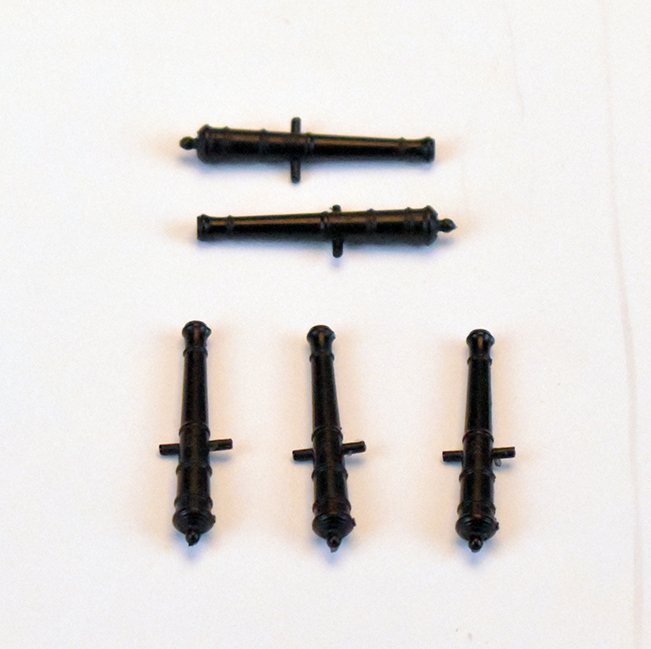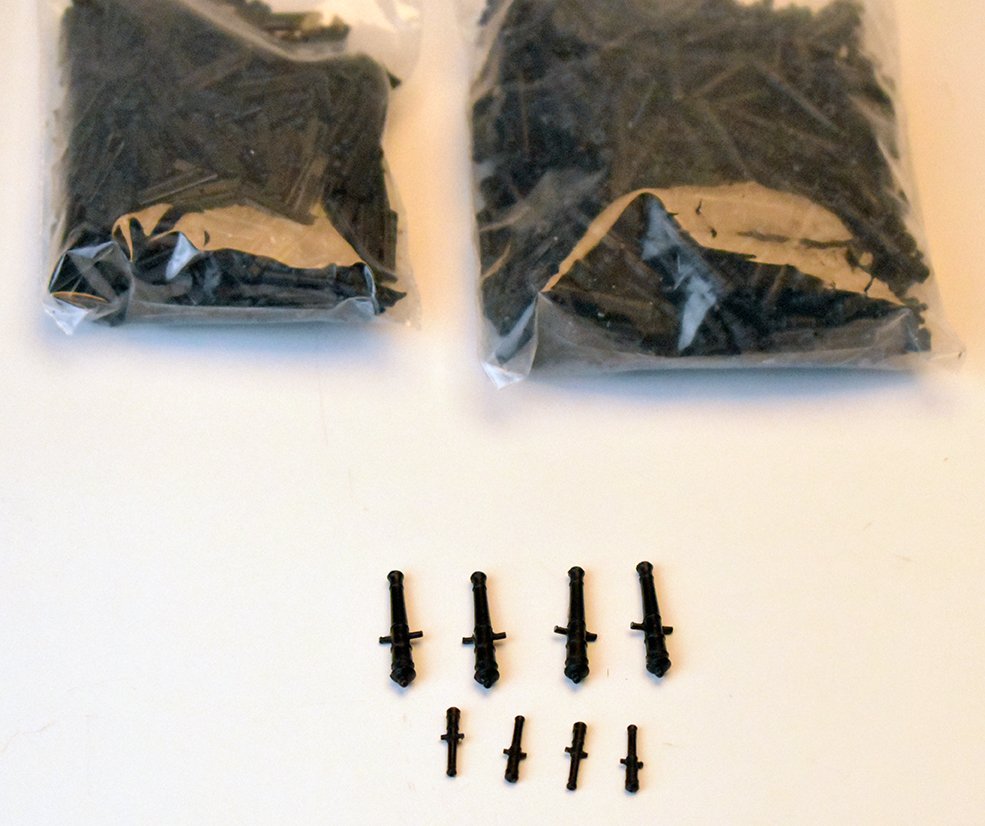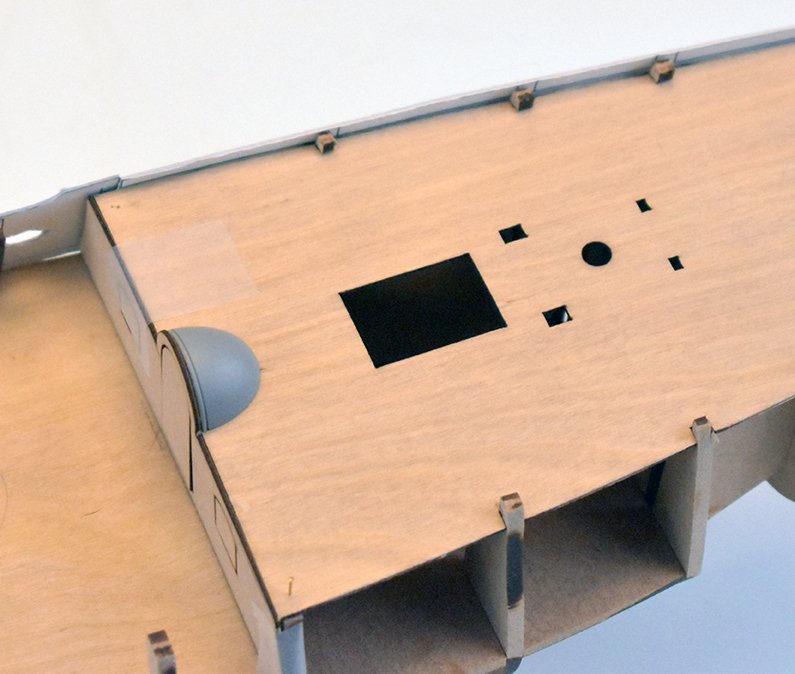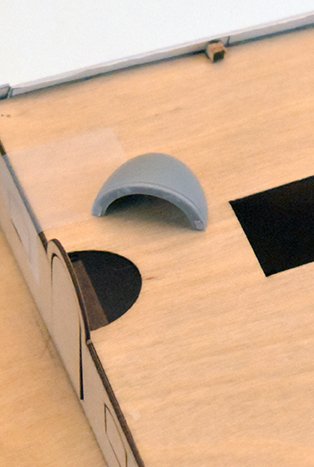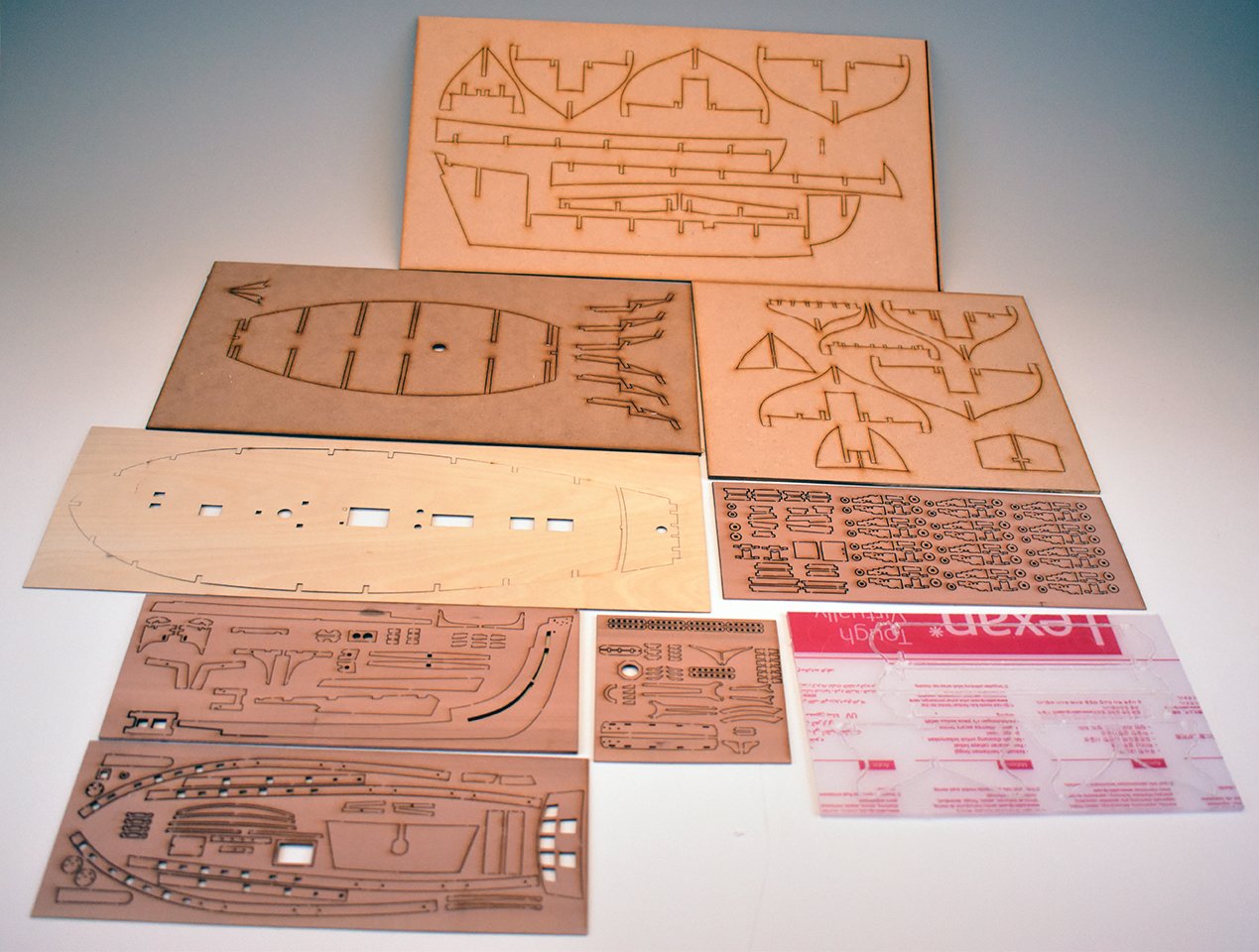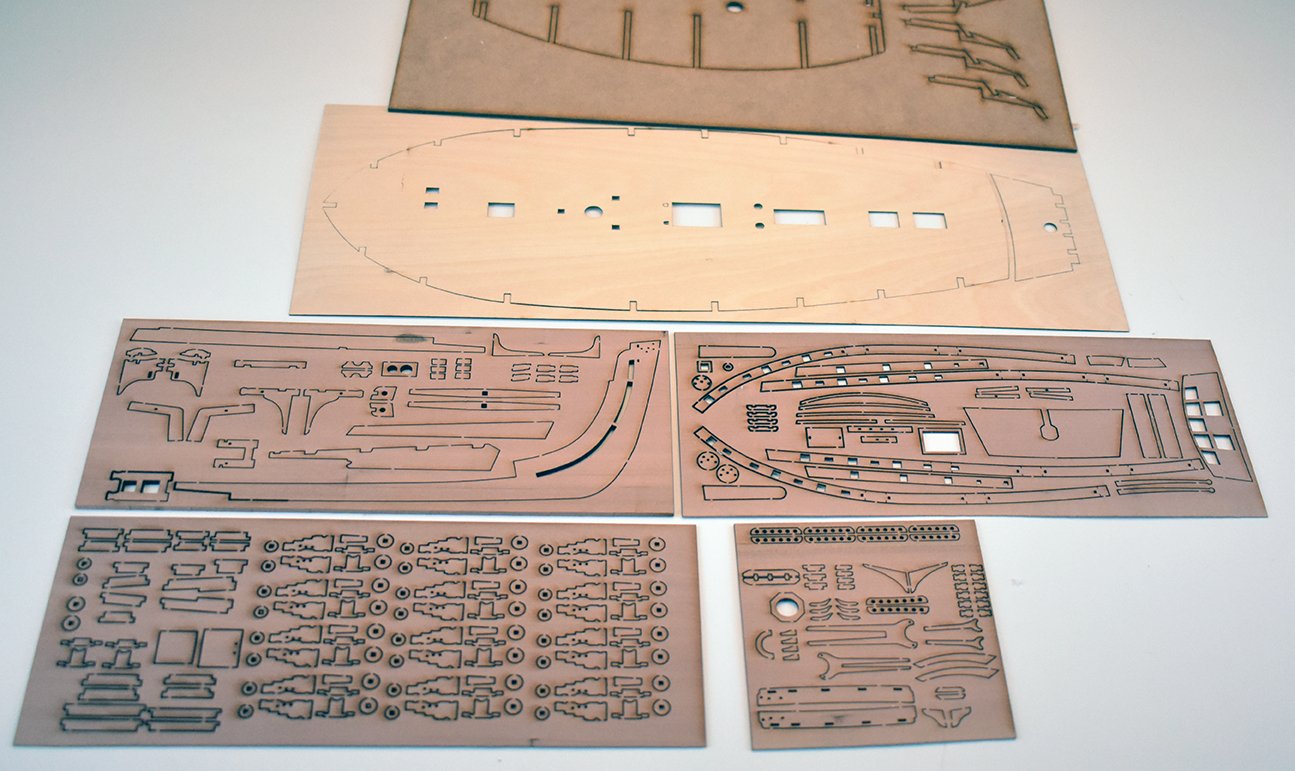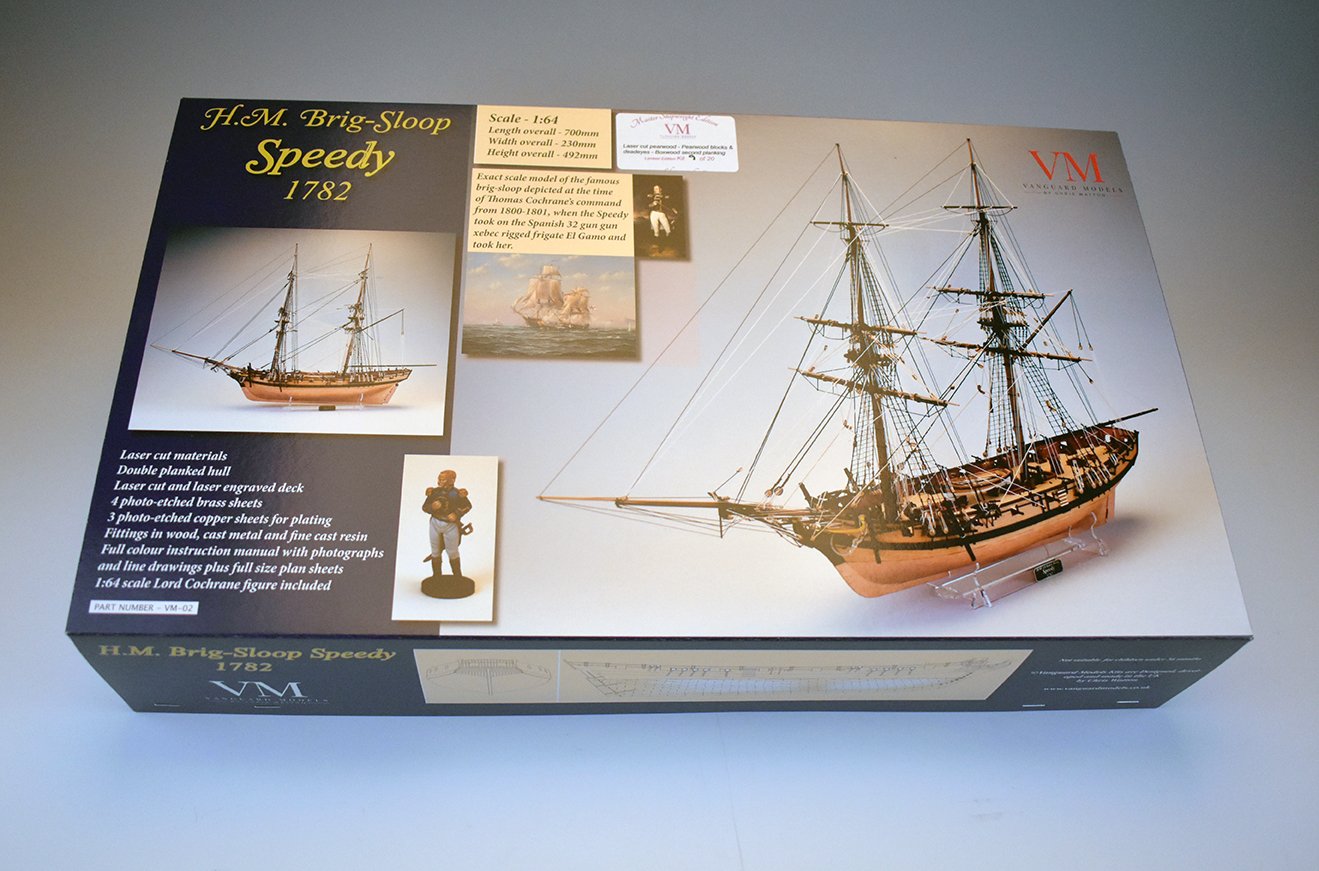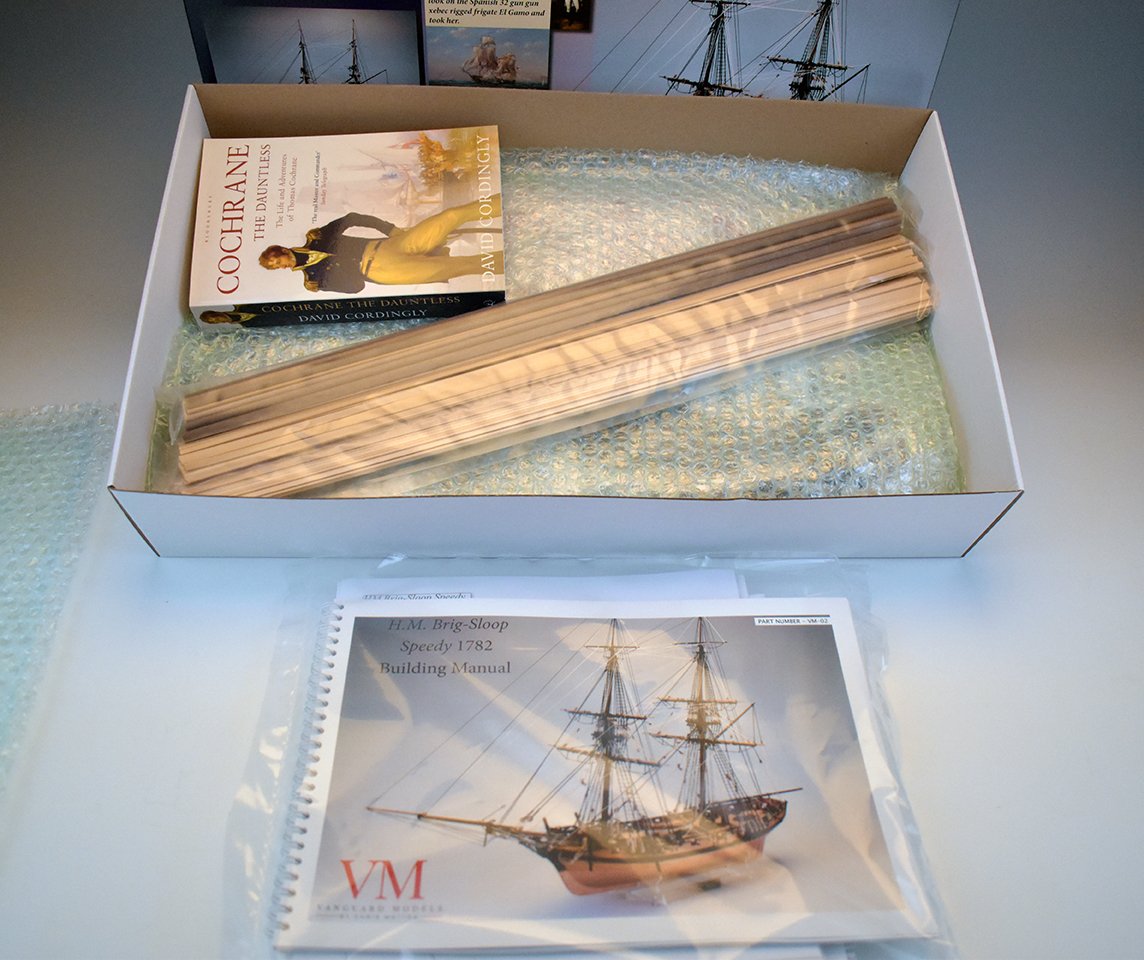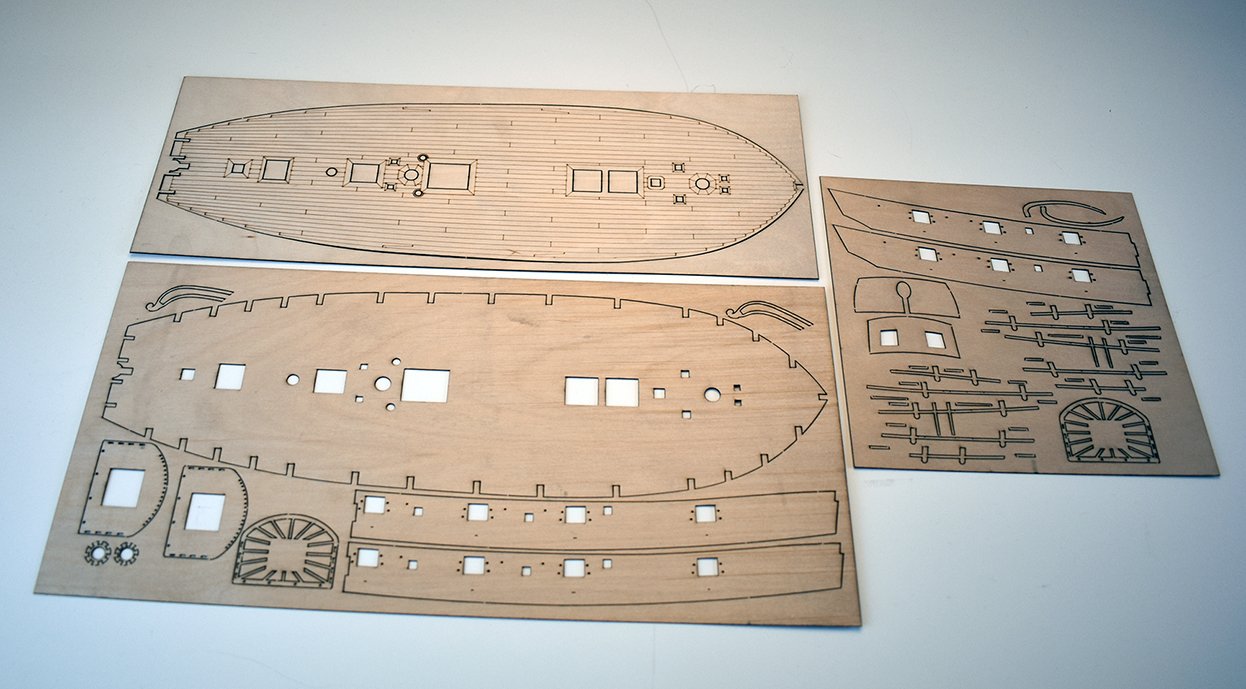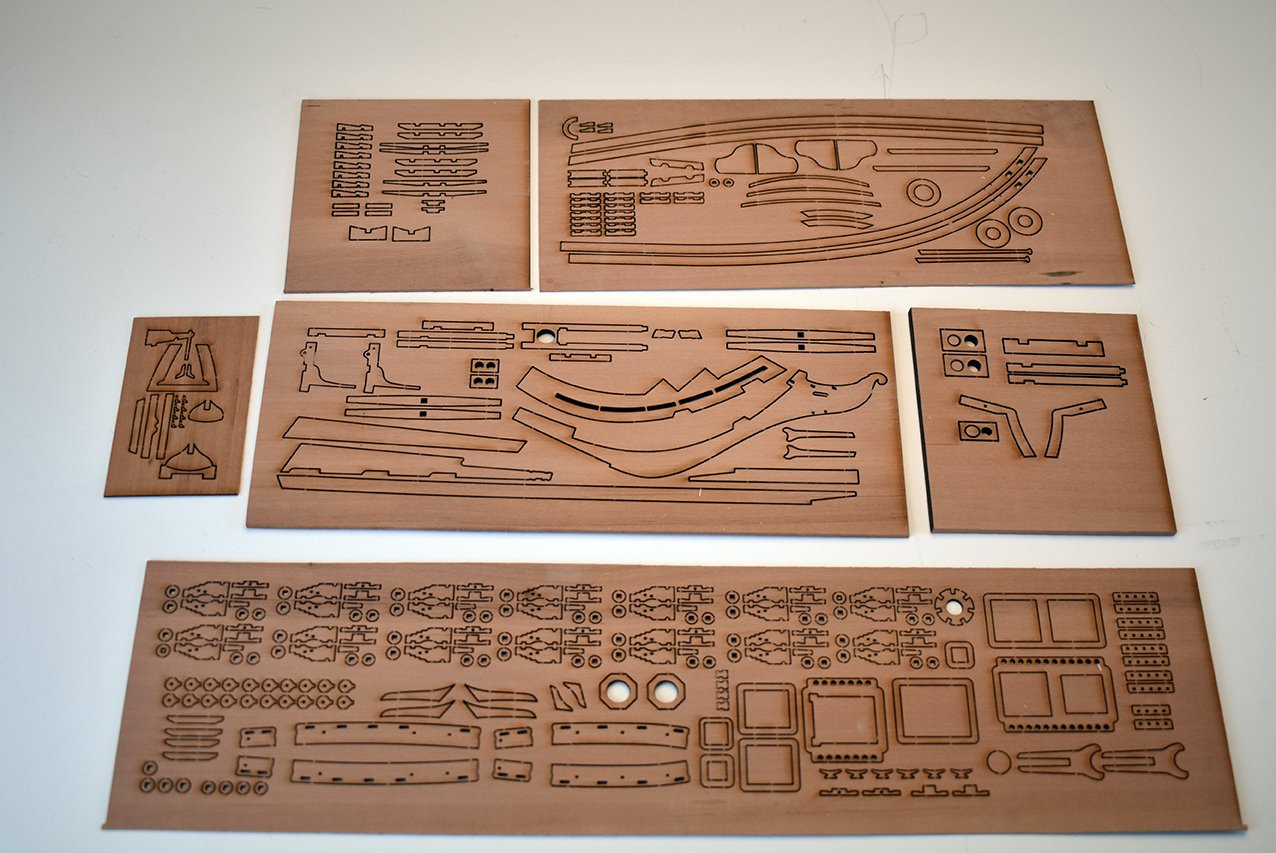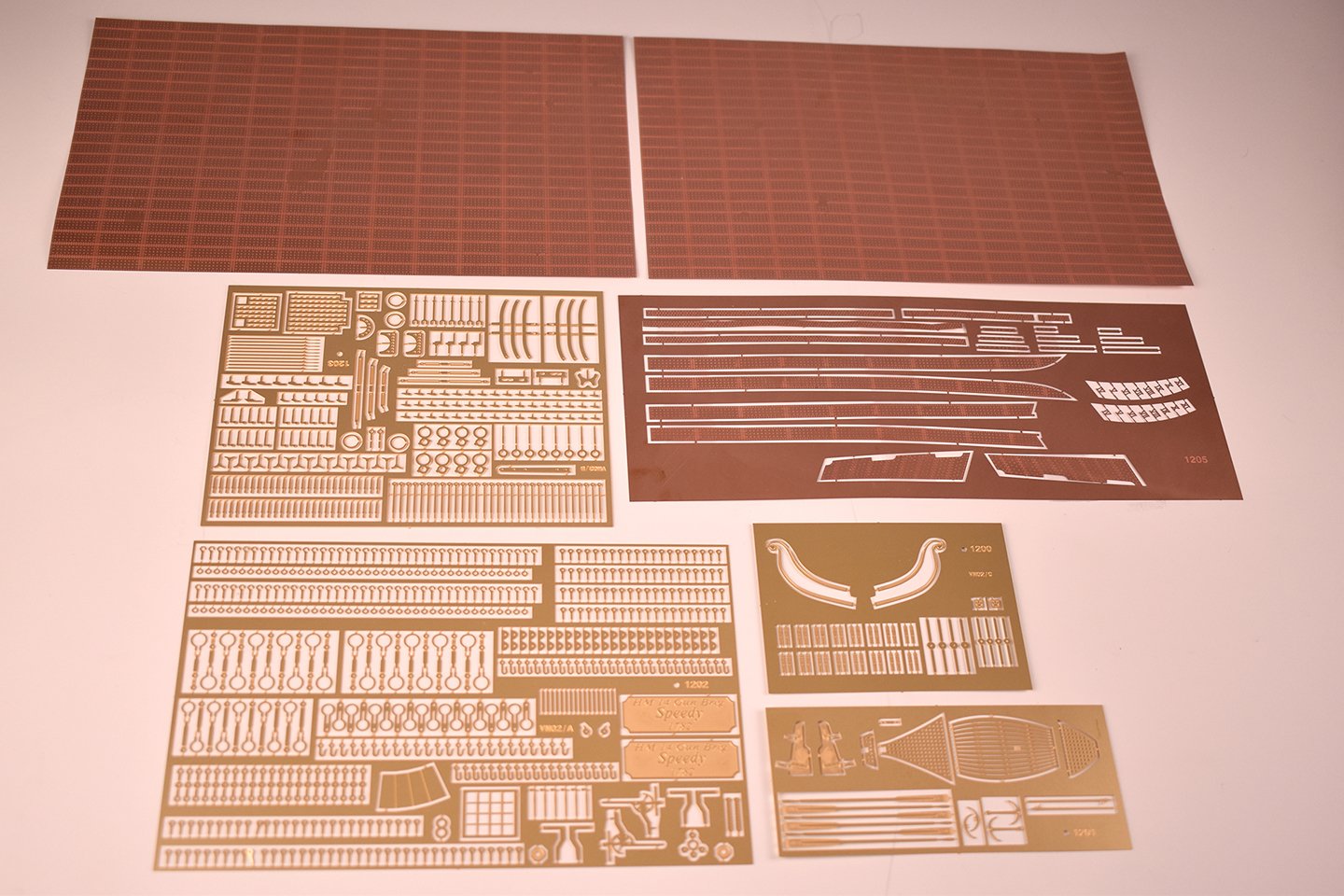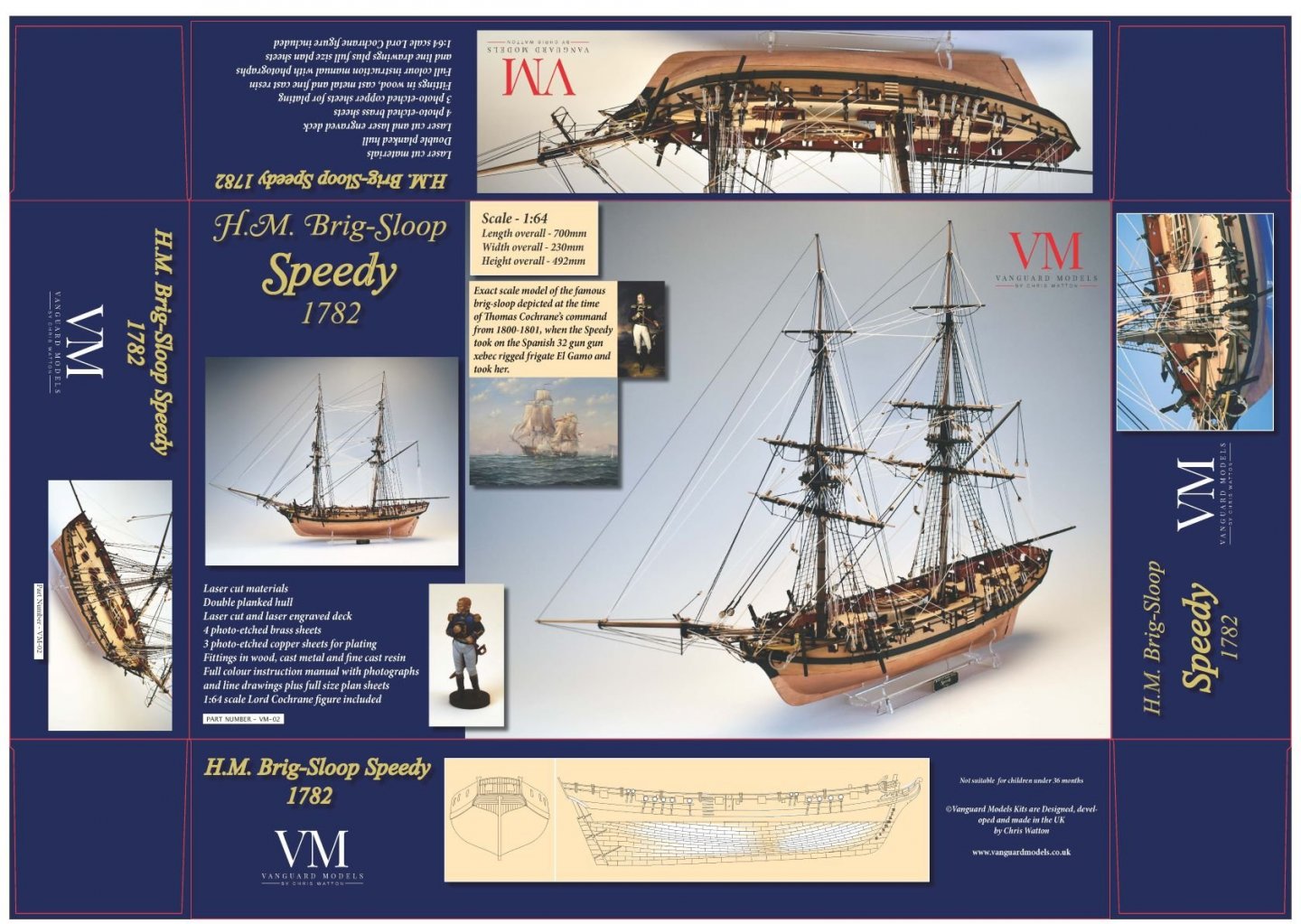-
Posts
2,315 -
Joined
-
Last visited
Content Type
Profiles
Forums
Gallery
Events
Everything posted by chris watton
-
Not for a while, though! I will not be able to work on the third kit for a week or two, as all time (when not at work in my other job) is taken up by sorting future Speedy kits and getting things ready for laser machine next week. At the moment, I have 7 Speedy's in stock. The laser cut is by the same company that did the Master Shipwright pearwood version, all is the same except basswood laser cut parts and pearwood second planking and blocks). I have sent off wood to the laser company for another 20 Speedy kits (in case it takes longer than I thought to master my own laser machine). These will be for the new main kit, which will have pearwood laser cut parts and pearwood planking, with options in drop down menu for the Cochrane book and pearwood blocks. This version will be £280, but not sure if I will have parts cut this side of Xmas.
-
OK, I have just finished the last UPS shipping form for all customers who pre ordered their Speedy. Everyone that ordered a Speedy will receive theirs next week. I think the latest is Friday for an Australian customer. They are all going via UPS, and are all packed as well as they can be, protected by a thick cardboard shipping sleeve. (Learnt a lot from doing those initial Alert orders...) My wife, Chantelle, tells me that her favourite job is doing the rigging lines, she loves that! Not really, this is the one job she hates, as it takes so long. Need to find a better way to 'automate' this aspect...
-
Cheers I would only want to produce fittings for kits I have done in the past, 72nd and 64th scale. Have to be careful what I choose to do though, if they have to be complimented with PE fittings (as gun carriages would need to be). Just stuff like capstans, binnacles, and when I have enough ready, a full suite of ships boats. Things like this can only be done if one has their own equipment to make them, I think, as outsourcing the laser cutting for such things is simply not financially viable.
-
Well, I have ONE Master Shipwright Speedy kit left in stock! These were genuine limited edition kits, as I will not be doing anymore kits using boxwood for planking for a very good while. Pear is a very nice wood, though. I may have to use a sub contractor to cut more Speedy kits, but if I do not receive anything this side of Christmas, I may as well do these myself, so once the stock is gone, that will be it for a while, as I need to re-organise. I never thought that I would run out of my Speedy stock so quickly. I have ordered my new laser/engraver machine, which will be arriving two weeks today. I have also ordered the materials I will need - but will probably have to re-format all of my existing laser cut CAD files.. I would like to start offering fittings. Stuff like closed and open heart blocks (never liked standard kit versions), and gun carriages, all in pearwood and 72 and 64th scales. I did get quotes for these, but the cost was so high, it was this that pushed me into thinking that I need my own laser machine, more freedom. Thank you!
-
Looking good Vane! Those fragile stern frames were a headache for me. I didn't want to make them so thick that they would draw the eye from the rest of the model, but also needed to be robust enough to take the stern and side patterns. I could not use any kind of wood due to grain problems, they would break even easier and more often. This is why they are MDF, and also why I made sure in the instructions to tell the modeller to glue the stern patterns to the frames ASAP. The original designs for the 4 stern frames was a lot more robust, but found their oversized protrusions too out of kilter with the general fidelity and scale of the model overall - kind of like putting a 48th scale capstan on a 64th scale kit.. But, they are fragile, but just on the right side of acceptably so, I think.
-
OK, I have booked the UPS pick up for Speedy PE parts from Italy today, and I should receive them tomorrow. They will need to be prepared for each kit, so all ordered kits will be ready to send on Monday, all being well. I have also been accepted for the funding of a high end laser/engraver machine, which I will be getting within the next few weeks. This is quite an investment, but feel it is essential if I am to continue.
-
Just had word from the Italians regarding Speedy PE. It will be ready for me to pick up from Italy on 5th (next Thursday), so will receive the parts a couple of days after this. I need to then prepare each set for the kits and simply add them to the already made up kits for each customer. All Speedy's will be shipped between 10th-13th December, so all in time for Christmas.
-
I will in time, I can say that it will be quite pretty! Yesterday I had 10 sets of Alert 6 and half pounder cannon barrels arrive, with another 30 sets being cast now. These will now be offered as an optional extra with the original Alert kit, and will be included in the upcoming second edition Alert kit, which will have a higher price to reflect the high cost of the resin cannon and pearwood laser cut parts and 0.8mm birch ply deck.
-
Lots of stuff arriving this morning! Just had another 30 Speedy kits worth of resin cannon, this time in black resin (Alert black cannon arriving Wednesday) Also included is a resin casting for the domed canopy sample for the third kit. There was no way I was going to assume the customer would want to make this part out of wood. It was likely copper anyway.
-
I just had another batch of laser cut parts for Speedy arrive, this time the premium version with basswood laser cut sheets, and they look very nice. Also, I had a sample set of the Alert complete laser cut parts for a top end version of Alert. I made minor changes to some parts, and the deck is now moved to 0.8mm plywood, and the wooden parts are now in pearwood. I added a couple of pics of the Alert samples, one with all of the sheets, and another with the changes.
-
Just took a couple of pics of what's inside the box. This is Master Shipwright kit number 9, and is just awaiting the photo etched parts to be added, so when they arrive, they can be shipped immediately. Because everything is protected in bags, I included what cannot be seen again. (Main component parts). I should find a clear fittings tray, to show off the blocks, cannons etc. but they are all in that little box, quite safe..
-

kit review 1:32 Fifie – The Scottish Motor Fishing Vessel by Amati
chris watton replied to James H's topic in REVIEWS: Model kits
The drawings were based on plans from James Pottinger (also other drawings of like vessels), with whom I liaised with when developing the model. This was 12 years ago now. -

kit review 1:32 Fifie – The Scottish Motor Fishing Vessel by Amati
chris watton replied to James H's topic in REVIEWS: Model kits
The wheelhouse was designed according to the real plans exactly. It was a small structure, as the originals didn't have a wheelhouse at all. It is only when they stuck in an engine they added this. (They originate from pure sailing vessels) The name I gave this was Rob Roy, it was also on the (now blank) nameplates that appear on the sides of the model. I think Amati was worried about copyright over the name, although I have no idea why. -
It is, and I am glad I insisted on them using one of my files, rather than their own which would bare no real resemblance to what I need the machine for. That is the difference between an 80W laser (top pic) at half the price of the narrower beamed 40W machine (bottom pic). I did forget to add the retention tabs to each part, though, which is why some bits are missing, nothing to keep them in place once cut...
-
Yesterday I had a couple of samples of laser cutting from a sample file I gave the company and 1.5mm pearwood I also supplied. I want a certain high spec laser machine, recommended to me by someone who already has one. The company that sells them asked what the machine will be used for. (80% cutting and 20% engraving). He recommended a cheaper version, can you tell which is the cheaper version from the samples (or did they over-egg it as a ruse...). Clearly, the 'Nuclear' option is out of the question, so it seems I will go for my first choice and what was initially recommended to me, which suits perfectly the type of work I want it to do. It will be quite an investment, but I really do feel that I need one, looking forward. As I mentioned, I have ordered a LOT of pearwood sheet from Germany, which should arrive in the next couple of weeks. For my third kit, I am erring on having only one quality option, pearwood laser cut parts and pearwood second planking, with cast resin decoration for figurehead and stern and cannon, and laser engraved deck planking. Also, as I have mentioned, I shall be having 15 Alert kits done by the UK laser company with pearwood laser cut parts, a 0.8mm ply sub deck (kit will still have boxwood deck planking) and cannons in black resin. I shall have one sample kit ready next week, so I can check it over. Price will be £220 with the different materials and resin cannon. Ultimately, I want all kits to have the same quality parts and materials, and it seems that the combination of pearwood laser sheets and pearwood second planking, together with quality castings is what most want (I would too, to be honest).
About us
Modelshipworld - Advancing Ship Modeling through Research
SSL Secured
Your security is important for us so this Website is SSL-Secured
NRG Mailing Address
Nautical Research Guild
237 South Lincoln Street
Westmont IL, 60559-1917
Model Ship World ® and the MSW logo are Registered Trademarks, and belong to the Nautical Research Guild (United States Patent and Trademark Office: No. 6,929,264 & No. 6,929,274, registered Dec. 20, 2022)
Helpful Links
About the NRG
If you enjoy building ship models that are historically accurate as well as beautiful, then The Nautical Research Guild (NRG) is just right for you.
The Guild is a non-profit educational organization whose mission is to “Advance Ship Modeling Through Research”. We provide support to our members in their efforts to raise the quality of their model ships.
The Nautical Research Guild has published our world-renowned quarterly magazine, The Nautical Research Journal, since 1955. The pages of the Journal are full of articles by accomplished ship modelers who show you how they create those exquisite details on their models, and by maritime historians who show you the correct details to build. The Journal is available in both print and digital editions. Go to the NRG web site (www.thenrg.org) to download a complimentary digital copy of the Journal. The NRG also publishes plan sets, books and compilations of back issues of the Journal and the former Ships in Scale and Model Ship Builder magazines.



